Dating Reality Shows That Achieved Full Berserk

Reality dating shows are pretty weird as a general concept. You (and usually a few dozen others) are cozying up to a complete stranger while millions of people watch you on TV and talk about how much of a dummy you are. But even with this general strangeness, some of them still manage to be leaps and bounds more odd than anything you'd ever expect. For example ...
I Want To Marry Harry Tried To Lie To Its Contestants About Dating A Prince
Modeled after Joe Millionaire, 2014's I Want To Marry Harry was advertised as a show that would make dumb, dumb American women think they were competing to date Prince Harry by using a guy who kinda looked like him if you squint really hard.
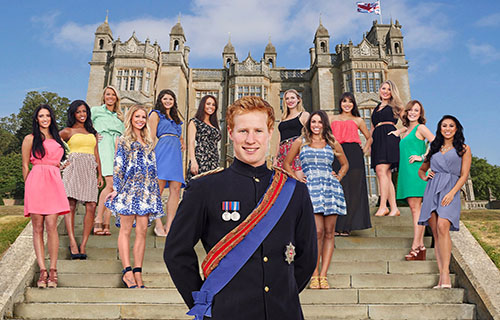
The thing is, the women didn't buy it, because they were adults with functioning brains. Contestant Kimberly Birch told Splinter that once producers found out the jig was up, they resorted to some fairly psychotic gaslighting tactics. These included demanding the women only look forward while walking down the street (because for some reason they "had" to walk past gift shops with royal merch?) and having them go to a "therapist" who was really an unlicensed rando hired to plant doubt in their minds.
They'd even position people outside the women's rooms at night to (stage) whisper: "You have to get him back to Buckingham Palace. The royal family's very upset. They're not happy about the show. It's this new thing they've never done before, and they're trying to be up and up with social media, and the way that the world is." All very natural-sounding dialogue for a production team to have right outside a contestant's bedroom.
The Harry stand-in, Matthew Hicks, went on to reprise his role in a Schweppes commercial that the real Prince Harry would probably see as a pretty uncomfortable ode to his party days. However, in the commercial, Hicks is much more convincing than he ever was on I Want To Marry Harry, probably because he doesn't speak, the edits happen quickly, and he's often shot from odd angles. He was also offered the role of Harry in a Lifetime movie, but declined for unknown yet probably totally logical reasons. Anyway, the show lasted four episodes. Seems about right.
Related: The 6 Most Pathetic Dating Show Contestants Of All Time
Age Of Love Lied To Its Contestants And Its Star
In January 2007, Australian tennis star Mark Philippoussis suffered an injury to his "good" knee which Dr. Hamish Osborne predicted would force him out of the game for anywhere from four weeks to eternity. Separated from his true love (tennis) and with lots of extra time on his hands, Philippoussis figured he'd say yes to finding love in lady form by starring in a Bachelor-like reality show.
But to up the drama, producers didn't tell 30-something-year-old Philippoussis or the female contestants the gimmick they had in store: He'd have his pick from a group of 40-something women (Cougars) and group of 20-something women (Kittens). Producers told the Cougars that the show was "about successful, empowered, positive women ... We didn't mention that there was a bachelor that didn't know that they were older." So to recap, they were told they were picked for being badass, when the tagline was basically "Would a guy date these old, OLD women when he could also date YOUNG women?"
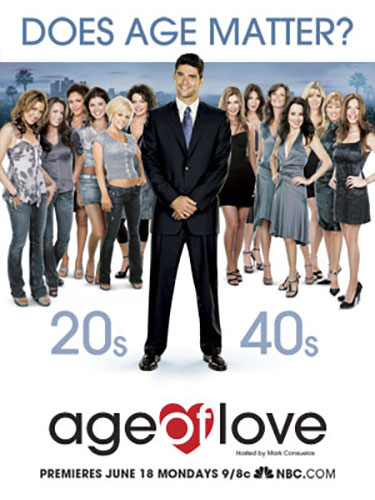
The show was hosted by soap opera star and officiator of Howard Stern's wedding Mark Consuelos, which is somehow both a very random and a deeply appropriate choice. Each week, Philippoussis would go on a date with one or two of the women, then eliminate one in the standard dating show way. Really, a missed opportunity not to do some sort of gimmick whereby he'd eliminate the cougars in one way (like over a landline) and the kittens another (like via text). Yes, I know that's playing on stereotypes, but this whole show is, so maybe it wouldn't have been as bad if they leaned in even harder? Alas, probably not.
Related: 6 Ways To Improve Reality Dating Shows (With Cruelty)
The Parents On Parental Control Were Truly Bizarre
Each episode of Parental Control, which managed to run from 2005 to 2010, opened with a set of parents introducing their absolute angel teen / early 20-something child ... but wait, there's a problem! Their kid has a terrible significant other. By "terrible," the parents mean they're spoiled, rude, or in one case, pick their nose and fling the boogers wherever they may go. (The booger-flinger is also a "fake punk," which the parents somehow spend much more time dwelling on.)
The parents were of course left with no other option but to go to an MTV-orchestrated cattle call to find their kid a new beau, where they asked totally normal questions that would definitely help them learn about compatibility, such as this one:
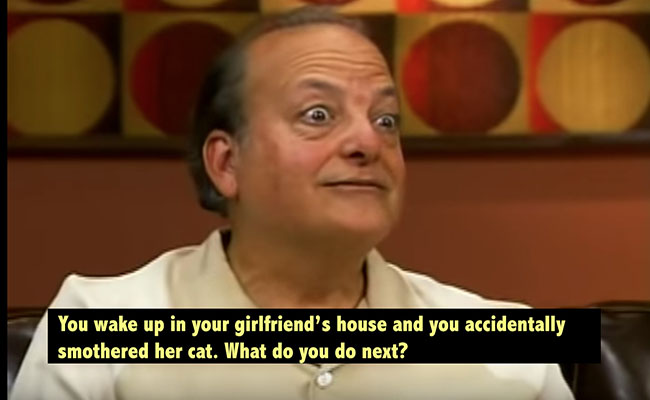
When each of the parents pick new potential lovers for their child, they head to their living room with the terrible significant other to watch the child go on two completely staged dates. Predictably, the terrible significant other continues to be spoiled, rude, or an excavator of their nose. Less predictably, the parents are TOO into the dates. Many of them seem very horny for their kids.
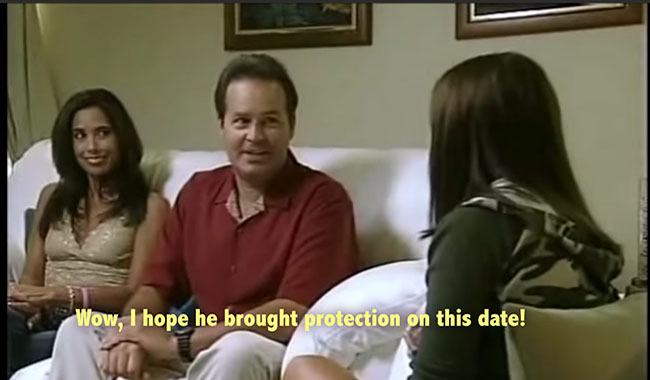
Episodes ended with the child deciding whether they would stay with their terrible significant other or go on another date with one of the complete strangers who agreed to go out with them without ever seeing a photo or hearing any information whatsoever about them. Surprisingly enough, there is no correct choice. It was such a thin premise that the show only ran for ... 273 episodes.
Related: Another Dating Show With No Balls
Beija Sapo Told A Terrible Version Of The Frog Prince
The MTV Brasil show Beija Sapo is an acid trip in which contestants, who are dressed up as toads, compete for a kiss from a "prince/princess" on a cartoonish-looking castle set. If they win, they become the "prince/princess," which doesn't really mean much beyond getting a title, but hey, that's kind of how it is in jolly ol' England too.
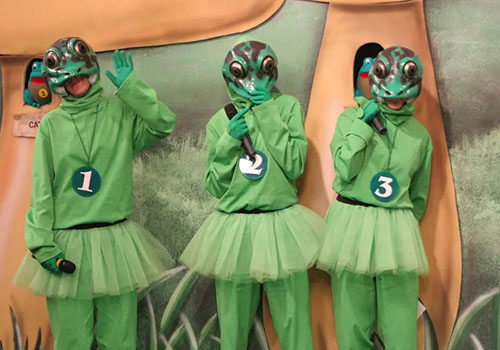
It's obviously an homage to the classic tale of a princess befriending a frog, where as her reward for looking past his slimy, wart-ridden exterior, the frog transforms into a handsome prince. However, in the original Brothers Grimm story, the frog transforms when the princess throws it against a wall, rather than kisses it. That honestly might be a little healthier.
Back to Beija Sapo: Audience members also get in on the action by competing to kiss the eliminated contestants via seeing who can scream "Help me out, Cicarelli!" (that's the name of the host) the loudest. And this isn't some little peck on the cheek. The "lucky" audience members get a mouthful.
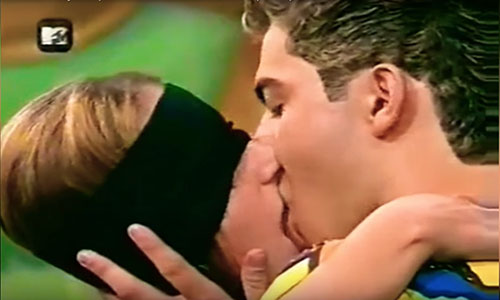
At one point, Beija Sapo was the highest-rated show on MTV Brasil. It was also innovative for being the first Brazilian show to broadcast a queer kiss before 8 p.m.
Related: The 5 Most Clearly Staged Reality Shows In TV History
Dating In The Dark Was Just As Uncomfortable As It Sounds
There isn't a great way to explain the concept of Dating In The Dark without sounding redundant. Contestants date in literal darkness while being filmed with night-vision cameras, ostensibly to see if "love is blind." Different activities get contestants as close as possible without penetration, including massages, groping, and one wherein they sniff each other's clothes. As creepy as clothes-sniffing sounds, it just might be the most legit activity a reality dating show has done to help people pick a mate. There is some evidence that unwashed clothes pack enough pheromones to signal to a potential mate if they'd be a good match to make a baby with. So keep that in mind every time you see the pile of dirty boxers from the father of your child. There's science behind why you're still with them.
The game ends when contestants see the light (literally) and have 15 seconds to decide whether they're still into the person they've been blindly humping.
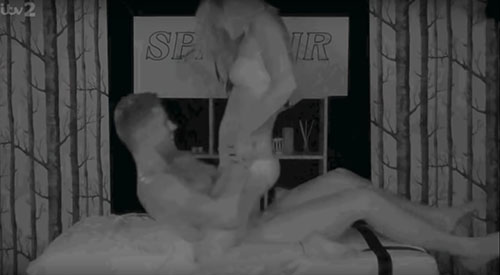
Dating In The Dark began as a Dutch show (Daten In Het Donker), and international versions were created for over 20 countries, including the U.S., the UK, India, and Slovenia. I guess you can't argue with a show that's (relatively) simple to shoot and easy to explain. That is, unless you're the Guardian writer who said, "There were birdhouse webcams that got higher ratings ," and that the show "seemed to validate the worst of humanity's impulses."
Related: 14 Dark Realities That Reality TV Shows Don't Show You
Naked Attraction Put A Lot Of Genitals On Display
If you've ever thought "Dating shows are fun, but it'd be great if the contestants had an even more superficial connection," then Naked Attraction might be for you. For five seasons, UK viewers were treated to contestants in glowing boxes, which showed their naked bodies from the waist down (yes, their genitals were out and about).
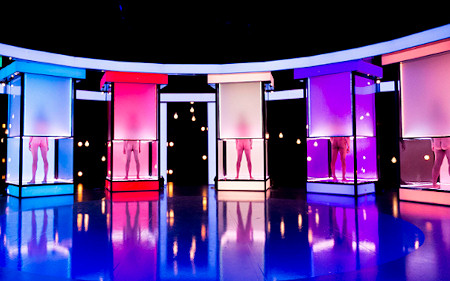
The person vying for a date would get to eliminate a contestant based on their physical "attributes." Then the eliminated contestant would strut out of their box, while the remaining boxes would slide up to show a little more skin.
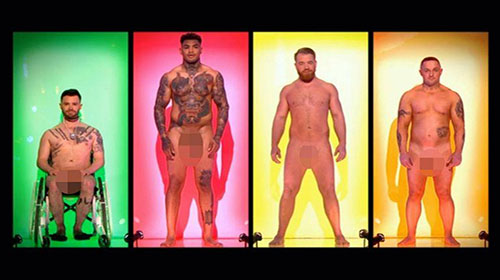
Once one contestant remained, the person doing all this genital judging would remove their clothes too (really, it's only fair) and have a little chat with their date. The actual date would take place promptly at 9 a.m. the next day (the sexiest time of all). Since the show included said date, an episode would take an entire 12 hours to film! For all their time and potential humiliation, contestants didn't get paid to appear; they did it all for the exposure (SORRY).
Naked Attraction wasn't a hit with everyone. Ofcom (the Office of Communications) received a lot of complaints that it wasn't appropriate for broadcast, but they ruled that it was no big deal, since there wasn't any direct sexual contact. You know you have something special on your hands when you have to defend your show with "Hey, they're not doin' it on camera!"
For more, check out Why Dating With Depression Is So (Bleeping) Hard - People Watching No. 3:
Follow us on Facebook. Because we love you.





